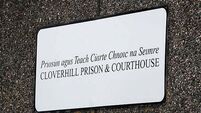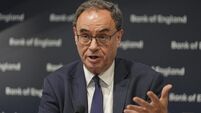Kyran Fitzgerald: History suggests pandemic misery prompts New Deal economic thinking

Global plagues or pandemics do not simply create a trail of human misery and social dislocation. They can also transform economies, writes
More than 20m people died in Europe — around one-third of the population — during the Black Death plague between 1347 and 1352. Villages were stripped of much of their workforce.
But the tide could not be held back. More and more people were drawn into the market economy.
Trade between nations grew. Credit networks sprang up, along with financial instruments, such as bills of exchange.
The Great Famine, in Ireland, between 1845 and 1849, produced a similar social and economic transformation.
The Covid-19 pandemic has already impacted enormously on the global economy and financial system.
The social-distancing measures aimed at stopping the spread of the virus have devastated the employment-rich service sector, which has grown to be such a large part of the economy.
The pace of change has been without precedent.
The current event is now being compared to the Spanish flu pandemic of 1918 and 1919, which killed between 40m and 50m people across the world.
Today, we are witnessing a lethal combination: a global pandemic and a shock to the financial system that could be as great as the Wall Street crash of 1929, should the effects of the crisis persist for a lengthy period, as many epidemiologists believe will be the case.
The world was a very different place in 1918. Far more people were employed in agriculture and in industry.
In 1918, there was no overnight shutdown of huge swathes of the service sector, on the grounds of public safety. Production was badly hit, as people fell ill.
Many industries suffered from severe labour shortages.
In 2007, Thomas Garrett, economist at the Federal Reserve Bank of St Louis, examined the impacts of the 1918 influenza pandemic on the US.
Around 675,000 Americans died — ten times the number of US combat casualties in World War One — yet the economy recovered relatively quickly.
The epidemic rolled out in three phases, the worst being the second, in the autumn and winter of 1918 and 1919.
The effects varied hugely from city to city. For example, 12,000 people died in Philadelphia.
The authorities there had pressed ahead with a Patrick’s Day parade.
In Memphis, almost one-third of transport workers got sick, curtailing services. One hundred workers at the local telephone exchange got sick. The phone company called for the elimination of unnecessary calls.
Historians have looked at data on wages, comparing figures for 1919 and 1921 with those for 1930. In US states with high mortality rates, per-capita income growth tended to be higher.
While service and entertainment firms were hit with big losses, suppliers of healthcare products did well. Demand for mattresses and springs surged, as more and more people required lengthy bed rest.
But entertainment venues stayed open, so the financial consequences — whatever about the human losses — were more confined. In London, for example, many cinemas stayed open.
One tragic consequence of the epidemic has been recently highlighted.
In 2006, economist Douglas Almond looked at the long-term effect of in-utero exposure to the pandemic.
He found that the children of infected mothers were 15% less likely to later graduate from high school, while their wages ended up being 5% to 9% lower, on average.
Curiously, these traumatic events did not lead to an era of activist government.
That would happen following another traumatic event, the Wall Street crash, a decade later, in 1929.
The historian William Leuchtenberg has studied the US presidency.
Around 1900, the presidency was something of a joke. When William McKinley took office, in 1897, the floors of the White House were close to collapse and the entire staff consisted of one secretary and six clerks.
Power lay with the US Congress.
The first expansion of the role of the presidency came under Teddy Roosevelt, who was in office from 1901 to 1909.
He was the first to intercede in a strike, backing coal miners. He launched lawsuits against the coal and rail barons and greatly expanded the country’s national parks.
It was his cousin, Franklyn Delano Roosevelt (in office from 1933 to 1945), who would preside over a huge expansion in the power of the federal government, in the aftermath of the Wall Street crash.
The countries that fared best at that time were those like Sweden, where the central government intervened. At his inauguration, FDR made a famous pledge: There is nothing to fear but fear itself.

One of the key members of his brains trust was Rex Tugwell, a specialist in planning who helped craft the economic interventions that would be rolled out.
He helped design the New Deal farm programme, resettling starving subsistence farmers in small holdings rented from the government.
The New Deal subsidised artists and writers and unleashed massive investments in infrastructure.
Errors were made, and prosperity did not really return until the Second World War, but the New Deal was vital in putting in place the building blocks for America’s huge war effort.
The Second World War was won as much in the vast factories of America as it was on the battlefield.
The idea of big government has fallen out of fashion.
It looks like such approaches are back in fashion, big time, as we try to come to terms with the consequences of the pandemic.













